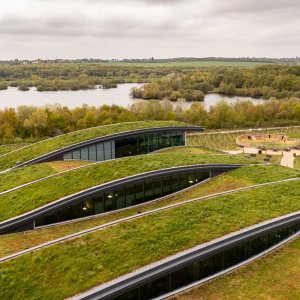The Search for Environmentally Friendly Refrigerants

STORY INLINE POST
The latent concern for the care of the environment and the evolution of technology has led us to search for friendly refrigerants that do not damage the ozone layer and have a lower potential greenhouse effect. In many countries, such as the US through its Environmental Protection Agency, the F-gas regulation in Europe and the Department of Energy in Australia, regulations are in force and prohibit the use of certain gases.
The Ozone Depletion Potential (ODP) is the measurement index that indicates the damage that a substance can cause to the ozone layer. The Global Warming Potential (GWP) is the measure that shows how a given mass of a greenhouse gas contributes to global warming.
Low GWP refrigerants are generally flammable, which means safety standards and building codes need to be revised to reflect their potential impact. This flammability will sometimes lead to restrictions on where the systems can be installed or the maximum load and, therefore, the capacity that can be used. It also means that the components must be compatible with flammable refrigerants to ensure that they cannot be considered an ignition source.
The technology and components suitable for low GWP refrigerants are well developed and have been available on the market since 2018, allowing OEMs to start creating compatible systems.
However, there is no perfect replacement for R410A. With any lower GWP alternative, OEMs must deal with at least one drawback, whether it be flammability, availability, or material compatibility. In each case, the challenge is to find the best compromise for your users, goals, and designs.
Although the coolant transition means component and system optimizations are necessary, cost and performance improvements can be significant in the medium term.
With high levels of ODP and GWP, CFC (chlorofluorocarbons) fluids are practically extinct and, currently, new alternatives are being sought for hydrochlorofluorocarbons (HCFCs) and hydrofluorocarbons (HFCs) and that gives rise to natural refrigerants being a viable alternative, highlighting hydrocarbons (HCs) that do not destroy the ozone layer and are found in abundance in nature. In addition, HCs have high energy efficiency and comply with the North American EPA regulations.
The 2016 Kigali Amendment to the Montreal Protocol unveiled new rules that must be met to respect nature, which mainly consist of a gradual reduction of HFCs by more than 80 percent over the next 30 years. HFCs are organic compounds frequently used in air conditioners and other devices as alternative refrigerants to substances that deplete the ozone layer, regulated by the Montreal Protocol. Although it is true that HFCs do not threaten the Ozone Layer, they are dangerous greenhouse gases with a global warming potential that can be many times greater than that of carbon dioxide.
Announced by the UN, the Kigali Amendment entered into force in 2019 as a powerful ally in the fight against climate change. If the Montreal Protocol is fully implemented, relative to substances that deplete the ozone layer, it can prevent up to 0.4º C of global warming by the end of this century. Estimates suggest that avoided emissions by 2100 could reach 5.6 to 8.7 gigatons of CO2 equivalent per year.
The phasing down of HFCs under the Kigali Amendment may also open a window to redesign refrigeration equipment to be more energy efficient, which would further support climate action. The goal is to reduce direct carbon emissions and curb global warming.
R32, R454B and R452B refrigerants have their advantages. All of them are low GWP alternatives with interesting performance and efficiency capabilities. In a new application, R32 stands out as the best performing and most efficient alternative to R410A but needs optimization. R452B and R454B offer easier drop-in replacement, along with the flexibility of a multi-refrigerant system. R454B also has a lower GWP, meaning it could stay in use for longer as standards advance.
As a direct replacement for the R410A system, R32 has around 10 percent more capacity. As a result, a new system built for R32 will either offer higher cooling capacity or require smaller displacement compressors to achieve the same capacity. Efficiency gains over R410A are expected, provided system and component designs have been optimized for R32.
However, the R32 has a high discharge temperature which can limit its operating environment unless the problem is resolved by design or injection of some sort.
R452B is the closest direct equivalent to R410A in terms of capacity and efficiency. R454B offers a slightly lower capacity but has the benefit of an even lower GWP. Both refrigerants allow the fastest conversion from R410A and, if the system uses the Danfoss portfolio of components, provide flexibility for multiple refrigerants, allowing for top-of-the-line customization.
Danfoss solutions comprise 19 product families. Through innovation and development, it is hoped to secure a viable path forward in commercial refrigeration and air conditioning. The alternatives for commercial refrigeration are R-448A, R-499A, R452A and CO2, products that reduce the GWP by half. Low GWP HFC refrigerants are likely to play an important role in the future, but they are typically slightly flammable substances and should be handled with this in mind.
About the author:
Xavier Casas is the Managing Director of Danfoss Mexico. He has developed his entire professional career within the company and in the last two years he was the global head of the supply chain of the Commercial Refrigeration and Air Conditioning area, being at the forefront of the strategy in the operations in the Danfoss factories located in India, China, Poland and Denmark, and aiming to increase flexibility and business agility to meet the needs of customers.
























